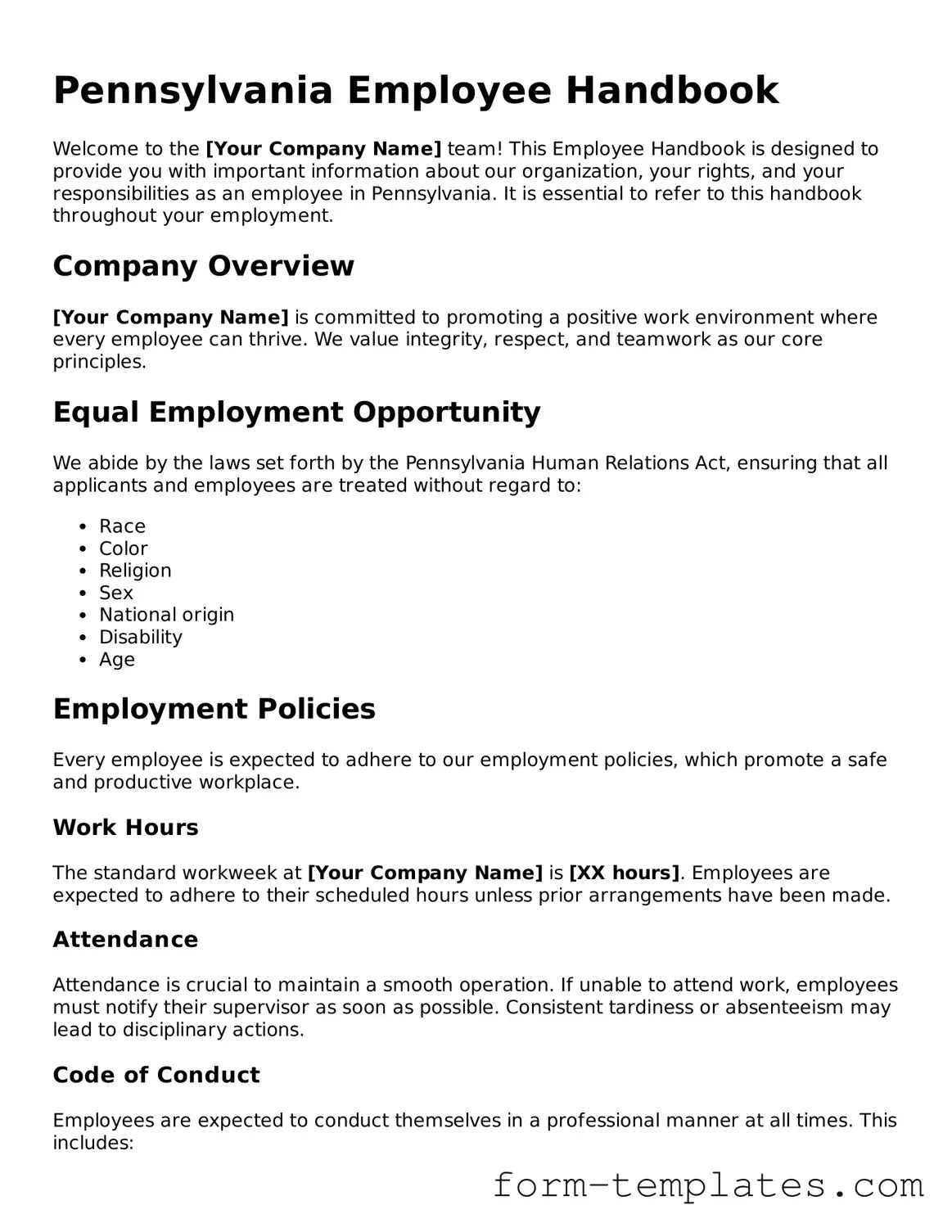Pennsylvania Employee Handbook
Welcome to the [Your Company Name] team! This Employee Handbook is designed to provide you with important information about our organization, your rights, and your responsibilities as an employee in Pennsylvania. It is essential to refer to this handbook throughout your employment.
Company Overview
[Your Company Name] is committed to promoting a positive work environment where every employee can thrive. We value integrity, respect, and teamwork as our core principles.
Equal Employment Opportunity
We abide by the laws set forth by the Pennsylvania Human Relations Act, ensuring that all applicants and employees are treated without regard to:
- Race
- Color
- Religion
- Sex
- National origin
- Disability
- Age
Employment Policies
Every employee is expected to adhere to our employment policies, which promote a safe and productive workplace.
Work Hours
The standard workweek at [Your Company Name] is [XX hours]. Employees are expected to adhere to their scheduled hours unless prior arrangements have been made.
Attendance
Attendance is crucial to maintain a smooth operation. If unable to attend work, employees must notify their supervisor as soon as possible. Consistent tardiness or absenteeism may lead to disciplinary actions.
Code of Conduct
Employees are expected to conduct themselves in a professional manner at all times. This includes:
- Being respectful to colleagues and clients.
- Being punctual and prepared.
- Adhering to company policies and procedures.
Benefits
As a full-time employee, you may be entitled to various benefits, including:
- Health Insurance
- Paid Time Off
- Retirement Plans
Safety and Health
We prioritize your health and safety. Employees should follow all safety protocols and report any unsafe conditions to management immediately.
Employee Grievance Procedure
If you have concerns or complaints regarding workplace issues, please follow these steps:
- Discuss the issue with your immediate supervisor.
- If the issue is not resolved, elevate it to the HR department.
- Formal grievances may be submitted in writing according to company procedures.
Conclusion
This handbook is a guideline to help you understand your role within [Your Company Name]. For questions or clarifications, please do not hesitate to contact your supervisor or the HR department.
Thank you for being a part of our team. Together, we can create a rewarding work environment.
